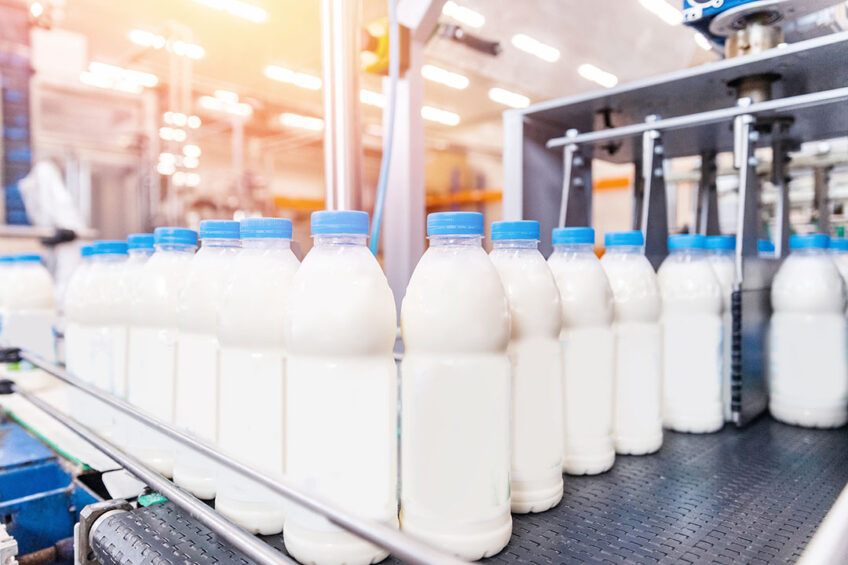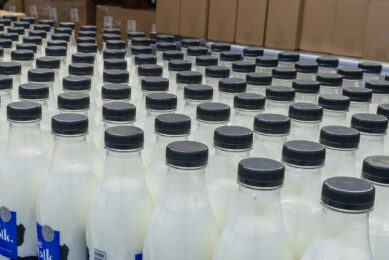US: Opportunities, growth and the WDE on the horizon

The American dairy market is seeing major opportunities, and milk production and domestic consumption are up this year. US dairy exports offer American farmers the opportunity to grow, says William Loux, the director of Global Trade Analysis at the US Dairy Export Council.
American dairy farmers are going through a financially challenging time – costs are up 10-20% this year and grain prices are exorbitant. Furthermore, the western US is facing severe drought conditions. But farmgate prices are rising and it is clear that there is a growing demand for US milk.

According to the latest information from the US Dairy Export Council, May was the second highest month for most dairy exports shipped in a single month on a daily basis. Compared to May last year, US dairy export volume in milk solids equivalent grew 13%, with the total value of those shipments 18% higher.
Overall, a surge in non-fat dry milk/skim milk powder (NFDM/SMP) to Mexico and the Middle East/North Africa (MENA) and the continued demand for whey in China were the primary drivers of ingredient export growth in May.
Port issues continued to frustrate US dairy exporters in May, but as seen in the past few months, exporters are finding ways to manage the delays at port and address rising freight and trucking rates.
A record year
US NFDM/SMP exports jumped 12% (+9,566 mt) to 88,729 mt in May. That’s the most NFDM/SMP the US has ever shipped in a single month, topping the 86,532 mt exported in March of this year.
Strong global demand and favourable US pricing continue to support US sales. As a result, US NFDM/SMP exports in the first 5 months were up 17% to 388,209 mt, well above record annual pace through the first 5 months.
Cheese, a major dairy export product
Of the major export products, cheese, was the only US dairy export to take a step back in May. But with global demand for cheese accelerating as many countries reopen, the US Dairy Export Council remains optimistic that this combination of factors should result in increased US cheese exports in the coming months.
Dairy tech: Key for successful and profitable farming
The Global Dairy Tech Start-up Spotlight event will hone in on cutting-edge dairy technology to maximise efficiencies and keep farms profitable. Read more…
“The trend for US exports has really been one of growth,” says William Loux, the director of Global Trade Analysis for the US Dairy Export Council. “In 2020 we had a record year in terms of volume and dairy exports to our international markets. That hasn’t stopped when we moved into 2021. We had some hiccups towards the end of last year and in January this year due to shipping delays and some issues in ports. But we have had some record months since then in total volume of exports.”
According to Loux, speaking on the podcast Dairy Defined, US exports have had a sharp acceleration in recent months through April. “In dollar terms, US$ 2.5 billion. That’s quite a bit of volume that we’re seeing going overseas.”
Strong global demand
There was a strong increase of US exports in the 3 biggest export products: non-fat dry milk, whey products and cheese. “We’re seeing a lot of growth in US dairy exports continuing on in spite of the pandemic,” Loux points out. “Global demand is fundamentally really strong right now. China has been leading the way in terms of overall dairy demand. Consumers in China are just wanting a lot of dairy. Mexico is recovering after a tough year. And southeast Asia and the Middle East need products, too.”
Good news for farmers
The growth of exports is good news for farmers, Loux emphasises. “Long-term growth for the US industry is where you want to place your bets. Over the past 10 years global dairy trade has grown by 3.8% on average every single year, the equivalent of 54 billion pounds [24.5 billion kg] of liquid milk. That is about twice the size of how much the domestic market has grown. Although the domestic market matters, if we want to grow as an industry, the international market helps to support us.”
Loux expects that US dairy farmers will benefit from increasing exports. “Milk production is up 2.5% so far this year across the US. And domestic consumption is growing, but not at the same pace. In order to keep the market balanced, we need to be moving more into the export market. This offers American farmers the opportunity to grow.”
China, an insatiable demand
Stephen Cain, an economic analyst for the National Milk Producers Federation, says that China – the biggest export market for the US – has had an insatiable demand over the last year. “Domestic milk prices are still very high in the country. These are prices we haven’t seen since 2013, 2014. That alone has already been pushing Chinese buyers to the international market. The government has really been pushing immunity support from dairy during the pandemic. And there is still a lot of growth potential. China’s milk consumption per capita is roughly around 15 pounds [6.8 kg] per year, compared to 141 pounds [64 kg] in the US.”
Nearly time for World Dairy Expo 2021
This huge US dairy event is again on the horizon. The World Dairy Expo (WDE) will return this year to Madison, Wisconsin, which brings some of those in the sector the opportunity to meet in-person. The 54th edition of the event is scheduled for Expo’s historic home, the Alliant Energy Center, 28 September to 2 October.
Serving as the meeting place of the global dairy industry, WDE brings together the latest in dairy innovation and the best cattle in North America. Crowds of 60,000 people from many countries will return to Madison, the organisers expect.
Last year, WDE was cancelled, a decision based on public health orders and restrictions related to Covid-19. But this year the world’s largest dairy-focused trade show, dairy and forage seminars, world-class dairy cattle show and more will be on display in Madison again.
This year, entries for the 2021 Dairy Cattle Show are exclusively online. The Summer Junior Two-Year-Old Cow Class has been added to the International Jersey Show and International Junior Jersey Show this year. Animals exhibited in this class are born between 1 June 2019 and 31 August 2019 and must be in milking form at WDE.
A Lifetime Production Cow Class has also been added to the International Guernsey Show and International Junior Guernsey Show for cows of any age that have produced at least 100,000 lbs (45,359 kg) of milk or 7,700 lbs (3,493 kg) of combined fat and protein as recorded in their lifetime production.
Given current rates of vaccination and nearly a half million dollars’ worth of upgrades, the Alliant Energy Center has made to air-handling units in its facilities, it is expected the WDE will be able to safely occur.
Join 13,000+ subscribers
Subscribe to our newsletter to stay updated about all the need-to-know content in the dairy sector, two times a week.










